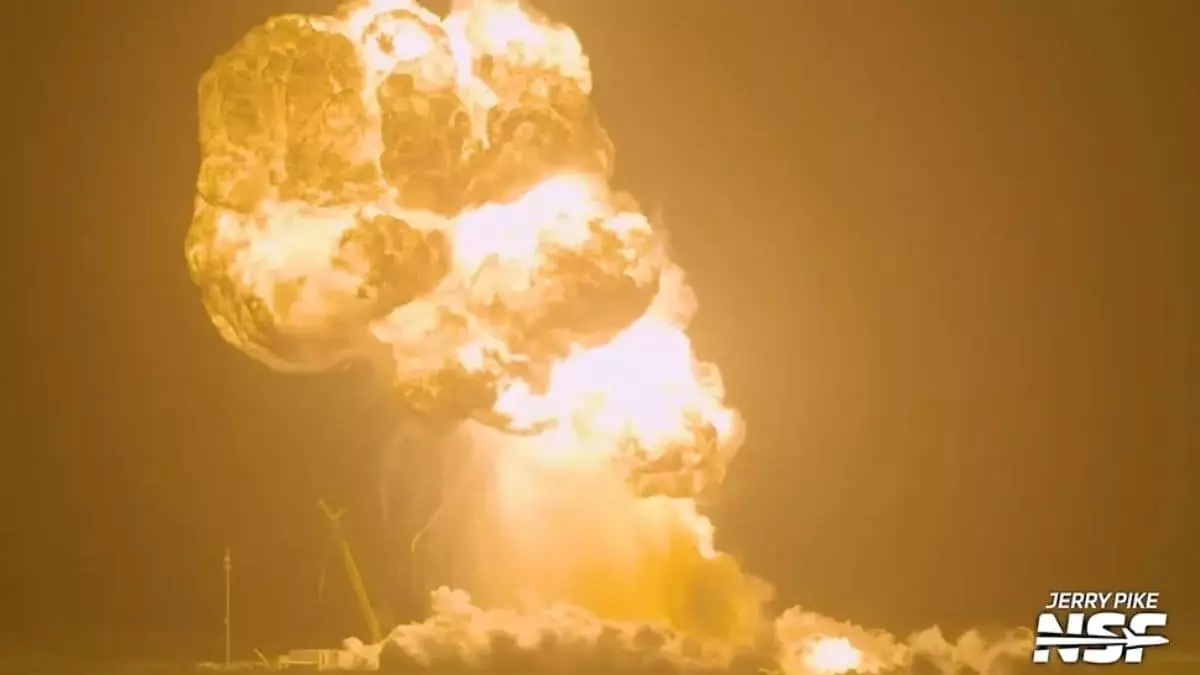The recent explosion at SpaceX’s Starbase facility in Texas serves as a stark reminder of the inherent risks of pushing the boundaries of space technology. Occurring late Wednesday night, a catastrophic failure during a static fire test obliterated a Starship rocket, creating a blinding fireball and sending a shudder through the burgeoning space community. This incident is emblematic of the perilous balancing act between innovation and safety, where each explosive setback raises indispensable questions about the price of progress.
The Stakes of Ambitious Engineering
SpaceX, led by the audacious Elon Musk, has framed the Starship project as a revolutionary step toward interplanetary colonization. Yet, as this explosion illustrates, the company is skating on thin ice in its pursuit of lofty NASA-style goals. The test, celebrated for its innovation, ended in destruction, prompting a re-evaluation of not just engineering but ethical ramifications as well. The purported cause—a failure of a composite Overwrapped Pressure Vessel (COPV)—forces us to scrutinize whether the relentless push for rapid development compromises safety protocols.
As Musk diminishes the disaster by referring to it as merely a “scratch,” we must scrutinize this cavalier attitude. One can’t help but wonder who will ultimately pay the price of such immature bravado. In an industry where one small miscalculation could lead to catastrophic consequences, dismissing failures as minor inconveniences can come across as reckless, potentially inspiring a culture of negligence under the guise of innovation.
Environmental Oversight in a Rapid Fire Race
Another facet of this incident illuminates the contentious relationship between technological advancement and environmental stewardship. While the Federal Aviation Administration has green-lit SpaceX’s ambition to conduct an astounding 25 launches per year, concerns voiced by environmental advocacy groups have been largely sidelined. This goes beyond mere rocket launches; it rests within the context of societal responsibility and ecological balance. As we hurtle toward becoming a multi-planetary species, we must ask ourselves: At what environmental cost?
The juxtaposition of SpaceX’s audacity and environmental negligence cannot be overlooked. The corporation’s rapid iteration method might promise faster results, but this approach risks long-term sustainability and could jeopardize the very ecosystems that sustain life on Earth. As the stakes rise for stunning technological feats, so too must our vigilance against potential ecological destruction.
The Future of Space Exploration
What’s perhaps most concerning, however, is the broader implications of such failures. Each explosion chips away at the public’s trust and could hinder collaboration with hefty partners like NASA. While SpaceX’s aspirations to ferry humans to Mars and reshape the course of history are undeniably thrilling, these ambitions must not come at the expense of safety and ecological consciousness.
As we venture into an uncharted frontier, a sober re-evaluation of priorities is imperative. The momentum generated by these explosive setbacks is not to be taken lightly; it shapes our approach to future celestial endeavors. Perhaps it is time for all involved to reconsider whether “test aggressively and iterate quickly,” without essential safeguards, will yield the vision of human achievement we wish to see among the stars.

